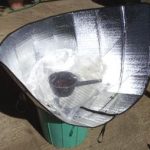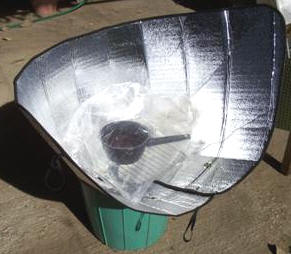Many systems have been created to make life for at-risk or disadvantaged groups easier and safer. From life alert systems for seniors to new water wells for remote villages in Africa, many groups are dedicated to helping others achieve a better, more independent life.
In developing countries, cooking food is one of the major chores for households. They have to gather wood, coal, and other natural resources and burn them to create spaces hot enough to cook foods. This use of materials that don’t burn cleanly and aren’t friendly to the environment have led environmental groups to suggest solar ovens as an alternative method. These gather sunlight and concentrate it as heat that can cook food. However, because solar ovens are dependent on sunlight to create heat, they generally can’t be used to prepare food anytime other than in the middle of a day and haven’t really caught on. In fact, when groups have attempted to introduce solar ovens in poor rural communities, they have often been met with derision by locals.
Enter Climate Healers, an international development technology organization that wanted to encourage creative young people to come up with a solution. They issued a design challenge to create a solar oven that can work at times when the sun isn’t out, which would allow people to use it to prepare breakfast and dinner, not just lunch. To do this, designs need to gather energy from sunlight and store it in a way that makes it easy to access the energy at a later time. The best designs should do this in a way that is inexpensive to create and maintain.
Climate Healers gathered many entries, mostly from groups of college students, and Engineering for Change reports on the top 10 designs. One of the most high-tech designs uses photon-enhanced thermionic emission, which gathers both heat and light from the sun and stores it in a rechargeable battery that powers an induction cooktop. Although expensive, this design gets bonus points for using the latest technology. Another entry features a creative hybridization of solar and fuel-burning technology, reflecting sunlight through a hole in a wall to a well-insulated cooker that stores heat for use at night and can also be heated by wood on cloudy days.
Most entries did a great job of using basic materials in combination with a device that absorbs or concentrates sunlight. One uses local waste materials, like coconut husks and straw, to insulate a chamber filled with sand or salt that stores the heat generated by the sun and can heat up a metal plate to cook food. A couple of other designs have steam-driven ovens that store heat in insulating materials or oil and allow the cook to pour water into channels to generate steam for cooking anytime.
Adopting solar ovens for everyday cooking could significantly change life for people in developing countries. Rather than spending so much of their time, energy, and resources collecting or purchasing fuel to burn, people could just use these solar ovens to prepare all of their meals. In addition, because they use clean energy, the solar ovens improve indoor air quality and reduce health problems in comparison to indoor cooking fires. These can significantly improve quality of life, and it will be exciting to see how the technology improves and becomes more feasible for widespread use in the future.

